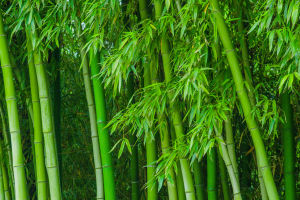The succulent family is very large, with more than 10,000 species of succulents known worldwide. They all belong to higher plants and have a strong ability to adapt and reproduce.
Commonly cultivated succulents include Sedum, Euphorbiaceae, Cactaceae, Liliaceae, Agave, and Lomataceae, of which Cactaceae is a separate family of plants. It is very different from other succulents in terms of characteristics, distribution, and maintenance.
Succulent plants can range according to the receptacle officials of different four categories, respectively, leaf succulents, root succulents, stem succulents, and other succulents.
1. Leaf succulents
Leaf succulents refund leaf parts to store water, the leaf parts are highly fleshy, the fleshy degree of the stem is low, and some kinds of stems with a certain degree of lignification. For example, aloe vera, everlasting herb, lithops, tile reed, etc.
2. Root succulents
Root succulents rely on their roots to store water. The roots are more fertile and can avoid sunburn from strong light, as well as gnawing by herbivores, and the stems and leaves fall off in the driest season to keep the roots hydrated.
3. Stem succulents
Stem succulents mainly rely on the stem to store water, the stem has a large number of water storage cells, the surface of the tissue can be photosynthetic, and the leaves are very few, or even no leaves. For example, cacti, cloth grain balls, etc.
4. Other succulents
All parts of the succulent plant are water-storage organs.
The main points of keeping succulent plants
1. Temperature
Succulent plants are generally suitable for growing in a warm environment, the most matter of growing temperature is about 20 ℃, and the summer high temperature moves the plant to the ventilation and shade maintenance. Succulents are generally not hardy, so it is best to move to the city in winter to maintain good insulationcactires.
2. Adequate and soft light
Most succulents like to grow in an environment with sufficient light, but succulents are generally sensitive to sunlight, and can not be exposed to strong light, so in the spring and autumn can be placed in a sunny place, summer light is too strong, to give succulents good shade measures to avoid sunburn.
3. Soil
To grow plants well, it is very important to have good or bad soil. Succulent plants require loose, breathable, well-drained soil, but with a certain ability to retain water, neutral or slightly acidic. Highly terrestrial spherical species (Moon World genus, Moon China Jade genus, Amber Jade genus) and rock peony genus can add a little more hulled ash and small grains of weathered rock.
Planting tall columnar species can be mixed with large-grained quartz sand to fix the plants. Generally, the soil is replaced with new soil once every 1-2 years.
4. Watering and fertilizing
To prevent pest and disease poisoning, both watering and fertilizing should be carried out effectively. Succulents should be watered according to their growth status. Whether the species are dormant in winter or dormant in summer, stop watering the pot during the dormant period. Fertilizer for succulent planting is rather light than strong and can be applied several times when needed.
Fertilization is prohibited for those with damaged roots, poor growth, and wounds on stems and leaves.
Some of the succulents can absorb some carbon dioxide, thus achieving the effect of purifying the air. Putting succulents in your home is not only beautiful but also purifies the air, so try to keep a succulent plant.

